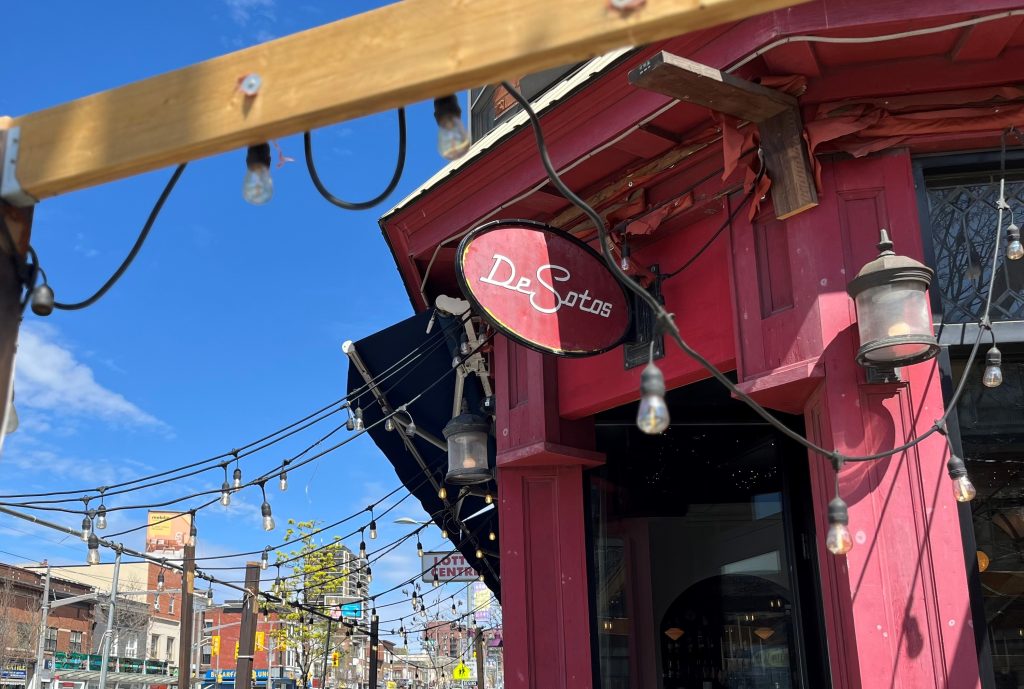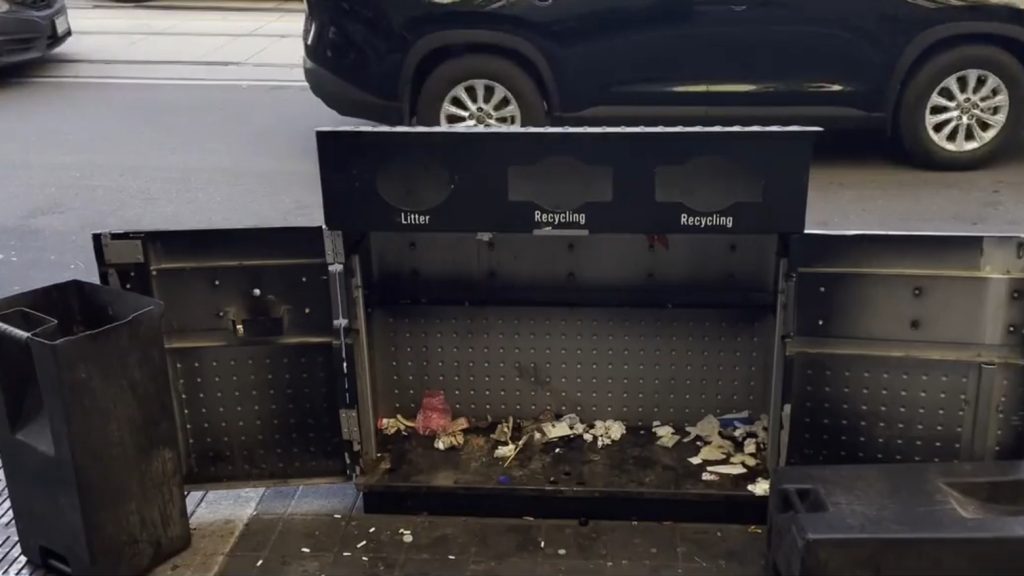‘I thought we were in a third-world country’: Ontario emergency room wait times spike
Posted January 3, 2019 6:53 pm.
This article is more than 5 years old.
If you had to go to a hospital emergency room through the holidays, chances are you had a long wait to see a doctor.
CityNews has brought you many stories of overcrowding over the past few years and the latest numbers show it’s getting worse – with more patients coming for treatment, and waiting longer than ever to be treated by a doctor.
Shellann Wallace saw that first-hand when she took her 18-year-old daughter to Humber River Hospital on the Friday evening before Christmas.
“I couldn’t believe it,” she said. “I thought we were in a third-world country.”
Her daughter was born with a heart condition and was having chest pains, but Wallace said they waited almost seven hours before seeing a doctor.
“I couldn’t believe it,” she said. “I thought we were in a third-world country. I was appalled at what was going on and there was basically nothing to be done. There was only one doctor … he looked helpless.”
“There was basically over 100 people in there,” she explained. “There were people standing, children from a few months old to senior citizens. We were left there just standing and waiting … there were seniors there crying.”
Wallace said frustrations boiled over several times throughout the night and security even had to be called.
A spokesperson for Humber River told CityNews they have had the highest volume of patients on record. Numbers from the Ministry of Health and Long Term care show several other GTA hospitals are also over capacity, including North York General, Scarborough Health Network, and Mississauga Trillium.
Hospitals are under increasing pressure with more patients arriving for treatment and more staying longer than they should because they are waiting for long-term care beds which have 30,000 people on the wait lists.
According to Health Quality Ontario, a government appointed task force, over the past year patients waiting for alternate care make up the equivalent of 10 large hospitals’ worth of space every single day and emergency room visits are up over 11 per cent over the last six years.
Across the province people spend an average of 16 hours in the emergency room before getting admitted. That’s more than two hours longer than three years ago.
Making matters worse, walk-in and urgent care clinics are often closed when emergency rooms are at their peak.
Of the 21 CityNews reviewed none were open after 8 p.m. and many had limited weekend hours.
North York General told CityNews it anticipated the increase in volume over the holiday period and took extra measures — as a result they say they did not see higher wait times compared to the rest of the year.
That wasn’t the case at other hospitals in the GTA and across the province. Follow this link to check the average wait times at all Ontario hospitals.
What hospitals are saying about wait times:
University Health Network
- “Our emergency department (ED) volumes typically increase in the first week of January as people return from holidays. Since Jan 1st, both our EDs have experienced an increase of 20-25% in number of patients compared to the week before. Our typical wait time for a patient to see a physician/NP/PA from the time of being triaged by a triage nurse is 1 to 3 hours for the vast majority of our patients. Between 0930 and 2130 hours, our wait times peak. As the volume increases as has been the case in the last few days, the wait times will generally be higher during this time frame.”
Sinai Health System
- “While we are seeing high volumes consistent with flu season, our wait times to see a physician haven’t increased and patients usually see a physician within 2.5 hours of arriving in our ED.”
Humber River Hospital
- “As in previous years patient volumes in Humber River Hospital’s emergency department spiked by 25% above the average over the holiday period — some days treating close to 500 patients within a 24-hour period. During this time, no patient was turned away. Applying existing triage protocol, we treated the sickest patients first and ensured we had additional staff, physicians and clinic spaces to support the increased demand. Today, we are 111% above capacity in our inpatient units. We are able to manage higher volumes using our Command Centre technology which provides a full view of hospital and emergency department patient flow. We continue to provide patients with information regarding urgent care and walk-in clinics in our catchment area via the hospital’s website, on-site signage and on social media. To our knowledge, patients are not returning to our Emergency Department after visiting an urgent care clinic. To reduce pressure on the emergency department in advance of this year’s flu season, Humber worked collaboratively with the Ministry of Health and Long-Term Care to open an additional 34 beds at the Reactivation Care Centre on December 16, 2018. At Humber River Hospital, we are proud of our staff and physicians who provide high quality patient care that demonstrates our commitment to compassion, professionalism and respect.”
North York General Hospital
- “The hospital had anticipated higher than normal volumes of Emergency department patients over this holiday period. Given this, appropriate steps and measures were taken both by the emergency department and the hospital to ensure that we saw no increase in our wait times compared to the rest of the year.”
Trillium Health Partners
- “Trillium Health Partners (THP) is providing care to almost 1.7 million patients each year – more patients than ever before. Our top priority is providing high-quality and safe care to everyone who comes through our doors. Our staff, physicians and volunteers are dedicated to delivering exceptional care to our patients, their families and our community. In order to meet the growing demand for health care services within our limited physical space, we are always thinking differently about ways to improve the way we deliver care. Our hospital has implemented new strategies and built new partnerships with the support of the Ministry of Health and Long-Term Care and Mississauga Halton Local Health Integration Network to ensure we are able to provide our patients with the right care, in the right place, at the right time, now and into the future. Every winter season, we prepare for an increased number of people visiting our Urgent Care Centre and Emergency Departments. This year we opened our newly expanded Emergency Department at the Credit Valley Hospital which now has a dedicated area for children, as well as a separate space for those needing mental health care. In December, we doubled the size of the Rapid Assessment Zone treatment area at the Mississauga Hospital, creating a larger, more modern space to care for our growing community. In addition, we hired more nurses and frontline staff and have formed new partnerships outside of the hospital to ensure faster access to services for services like rehab and long-term care. Last month we saw 7.5% more Emergency Department visits over December of 2017. Of the increase in patient visits last month, 95% were high urgency cases. This increase is caused by a variety of factors including a growing community, aging population, increase in flu and respiratory cases. Due to the increase in demand for services we want our community to know that patients coming Trillium Health Partners may experience longer wait times, busier Emergency Departments, challenges finding parking and may receive care outside of a traditional hospital room. We encourage our community to know their options in the community if they or a loved one need care during the winter. This includes visiting their family doctor; visiting myhealth365.ca to find a list of health care choices; calling Telehealth Ontario for healthcare advice; as well as, when needed, visiting our Urgent Care Centre and Emergency Departments. We are reminding our community that the best way to protect themselves, their friends and loved ones, is by getting the flu shot every year. In addition, it is important to wash your hands regularly, stay home if you are sick, and to remember to cough or sneeze into your sleeve.”
SickKids Hospital
- “From December 18-31, the average wait time in the Emergency Department at SickKids to see a health-care provider was 2.7 hours. In general, SickKids sees an increase in the number of patients visiting the Emergency Department in December. This number increases further over the holiday period. These increases are likely due to a number of factors such as the prevalence of viral illnesses at this time and variable access to primary care and cannot be attributed to one reason.”










